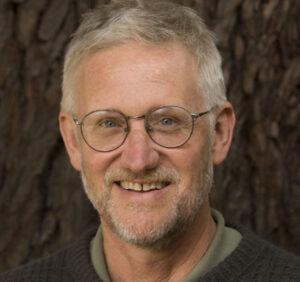What are you and your company doing to help reduce embodied carbon emissions?
Larry Strain
Principal, Siegel & Strain Architects, San Francisco
For the last few years I have been promoting the reuse and upgrade of existing buildings. This accomplishes two things: reusing a building instead of building a new one reduces embodied emissions, (A building renovation, even with significant energy upgrades results in 50 – 75% lower embodied emissions than a new building) and it also reduces existing operating emissions, (28% of global GHG emissions). I am working on a carbon calculator with Erin McDade of Architecture 2030, that allows you to quickly compare embodied impacts/savings and operational impacts/savings for new and reuse projects.
At Siegel and Strain, we are beginning to quantify all of the carbon impacts and savings of the buildings we design – both new and renovation projects. We start with the goal of designing low impact, all-electric, ZNE buildings. For new buildings we focus on reducing the upfront embodied emissions – specifying low-carbon and carbon sequestering materials. For existing buildings we focus on reducing operating emissions – energy upgrades and converting to all-electric. We are participating in the Embodied Carbon Benchmarking Initiative sponsored by Kieran Timberlake, using one of our building renovation projects.

Larry Strain
Lisa Conway
Vice-president, Sustainability – Americas, Interface
As someone working for an organization whose mission is Climate Take Back (literally to reverse global warming), I was so inspired by the Carbon Leadership Forum and specifically the Embodied Carbon Network. I wanted to help drive awareness and provide education on the topic of embodied carbon especially for interior spaces since they represent the bulk of projects and most focus is on concrete and steel – and ideally we’re reusing existing buildings! Specific to Interface, we’re launching carbon negative products this year! And all of our products are part of our Carbon Neutral Floors program.

Lisa Conway
Chris Magwood
Director, Endeavor Centre
I’m a director at the Endeavour Centre, a not-for-profit sustainable building school in Peterborough, Ontario, Canada. In 2012 I decided to begin calculating the embodied carbon of the school’s building projects using the Inventory of Carbon and Energy (ICE) database.
I started with the urban infill home we were building at the time, and the results were unexpected: the home had more carbon stored in its materials than was emitted in the production of the materials! Assuming that the results were wrong, I started doing more research, diving into the available academic papers. There seemed to be some large gaps in the research, in particular regarding low-rise buildings and biogenic materials.
After a few more years of “amateur” research, I decided it was time to study the topic more seriously and enrolled in a Master’s program at Trent University. My thesis, Opportunities for CO2 Removal and Storage in Building Materials, was completed in 2019, and the results backed up what I discovered back in 2012: it is possible to store more carbon in buildings than is emitted in producing them.
Since then, Endeavour’s building projects began taking embodied carbon much more seriously. All of their projects since 2013 have had net carbon storage of more than 250kgCO2e/m2, with one office building topping 360kg/m2.
During this time, I connected with the Carbon Leadership Forum and Embodied Carbon Network, which have provided an inspiring and challenging community for this ongoing work. In late 2019, I co-founded Builders for Climate Action, a Canadian group dedicated to promoting zero carbon buildings. The group’s first white paper, Low-Rise Buildings as a Climate Change Solution, was published in December and has inspired several municipal governments in Ontario to begin creating policies and incentives to reduce embodied carbon.
The Endeavour Centre and Builders for Climate Action will both continue to research and promote zero carbon building strategies, and Endeavour will continue to make carbon-storing buildings as examples of what is possible, while training a new generation of builders and designers to do the same.

Chris Magwood
Christie Gamble
Senior Director of Sustainability, CarbonCure Technologies
CarbonCure Technologies is a cleantech innovator focused on a singular mission: to reduce 500 megatonnes of carbon emissions annually from the cement and concrete industry. As Senior Director of Sustainability, my primary objective is to foster communication among the design and construction community with concrete producers in order to align embodied carbon reduction goals with concrete supply.
CarbonCure was founded in 2007 by our CEO Rob Niven. Rob understood that concrete has the ability to chemically mineralize carbon and he sought to develop a solution to permanently embed waste CO2 in every day concrete production.
Today, CarbonCure is proud to partner with over 200 concrete plants across North America and parts of Asia to reduce concrete’s carbon footprint by repurposing post-industrial CO2. As of January 2020, over 4.5 million cubic yards of concrete and millions of concrete masonry units have been delivered to construction sites using the CarbonCure Technology, and over 120 million pounds of embodied carbon has been saved.
As CLF members, we know we need to take action on embodied carbon now. I firmly believe that through collaboration between the building material industries and the design and construction firms who are leading this embodied carbon movement, we can collectively achieve significant carbon reductions in a very short period of time.

Christie Gamble







